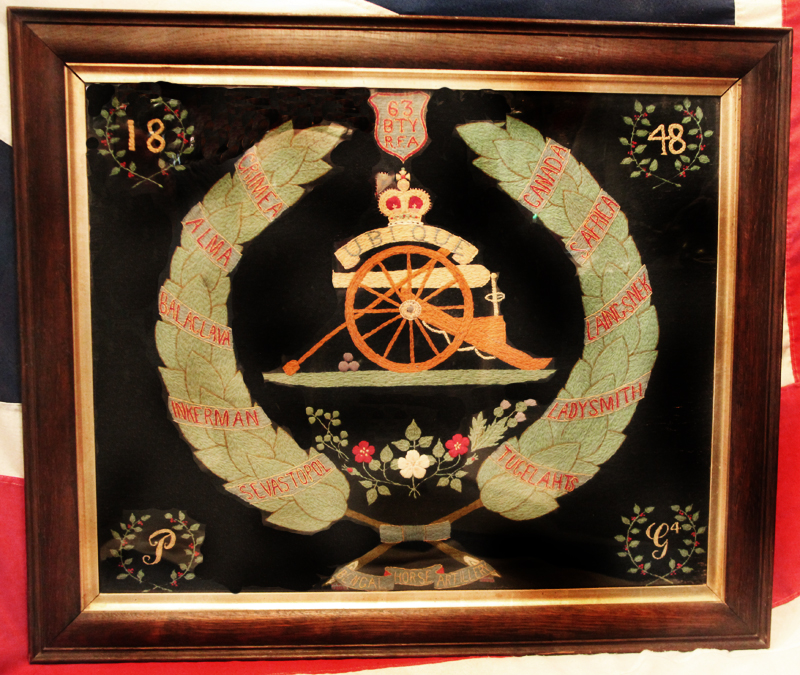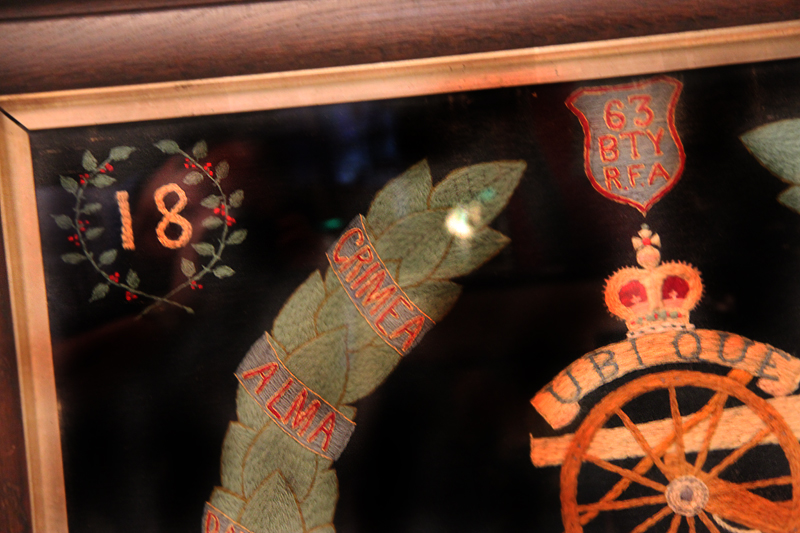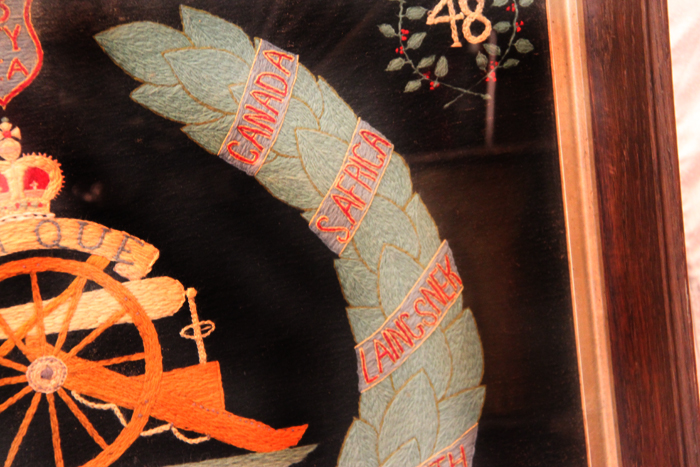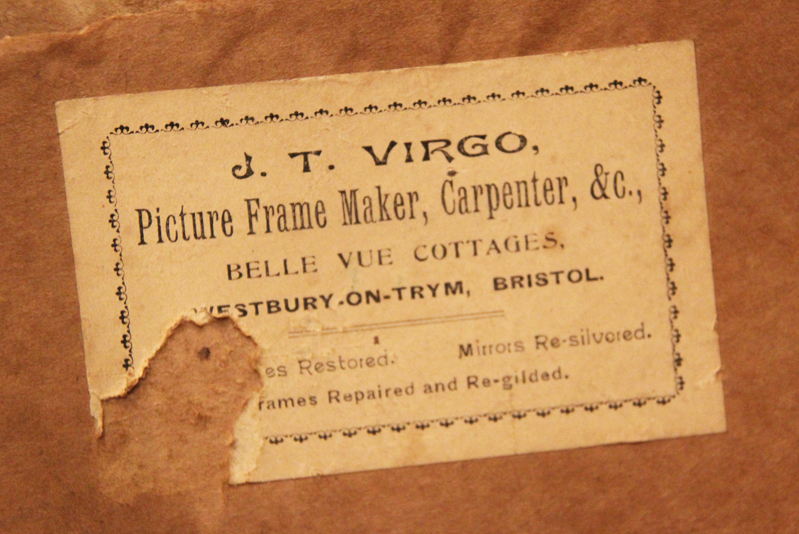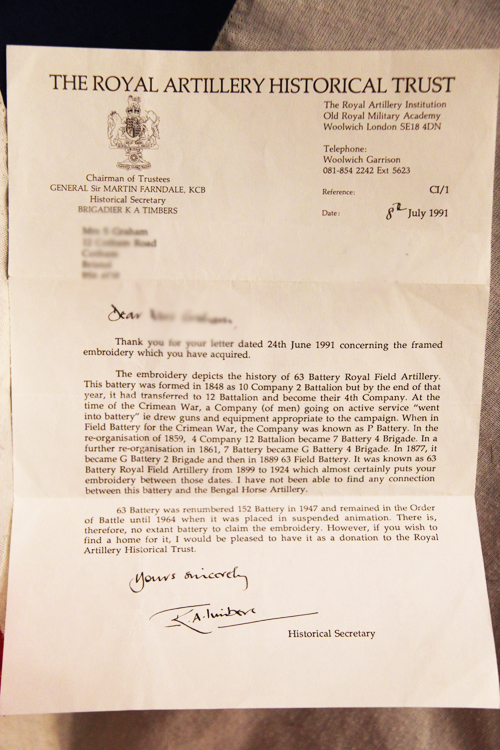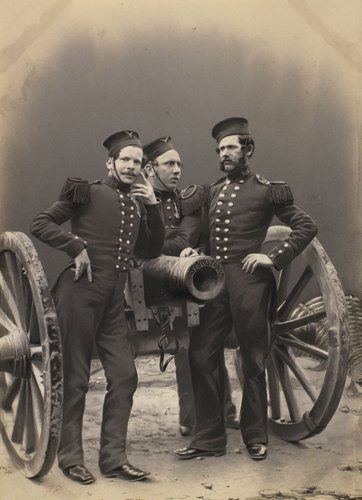A Most Fine, Antique, Original Regimental Embroidery Of the Royal Artillery, P Battery, 63rd Royal Field Artillery, With Crimean War, Canada and Boer War Battle Honours. One Of The Best Examples We Have Seen in 50 Years
Stunningly handsome embroidered regimental wreathed crest, with the field cannon and motto ‘Ubique’ of legendary ‘P’ Battery, and also bearing their later title the 63rd RFA. Royal Field Artillery
Likely stiched by an officer's lady from the regiment. A traditional pastime of the wives of the serving or past serving men from British Regiments in the army, or, by sailors themselves in the Royal Navy was the making of highly intricate embroidery of their regimental colours.
From the doomed attempt to seize the Russian guns by the Light Brigade at Balaclava, to the Siege of Sebastopol itself, artillery played a major part in the Crimean War. The official history of the Royal Artillery Regiment in the conflict is therefore indispensible to a full picture of the war. Original embroidery , made in the Victorian to WW1 period, nicely framed. With Crimean War, Canada and Boer War Battle Honours. The story of the 63rd RFA from 1899; The 63rd lost their guns on the Ismore. They were refitted and joined Buller in Natal in time to take part in the operations about Spion Kop and Vaal Krantz and in the final relief actions. One officer was mentioned in General Buller's despatch of 30th March 1900. The battery accompanied that general in his northward movement to the south of the Transvaal, and a section went with General Clery to Heidelberg. In General Buller's final despatch 2 officers were mentioned. Towards the close of 1900 and in 1901 the battery was employed about the Standerton line, and four guns accompanied the column of Colonel Colville which operated on that line and in the north-east of the Orange River Colony. Referring to an action near Vlakfontein, Lord Kitchener in his telegram of 22nd December 1900 said, "Colonel Colville attributes the small loss to the excellent shooting of the 63rd Battery and the skilful leading of Lieutenant Jarvis, 13th Hussars, and Captain Talbot and Lieutenant White of the Rifle Brigade". 34.5 inches x 29 inches in the frame.
Code: 22530
650.00 GBP

